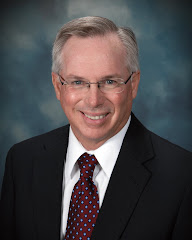News for the 118th District
By Representative Don Hineman
February 2, 2009 Volume 1, Number 3
How Does a Spending Cut Become a Tax Increase?
The deepening recession is making it difficult for state government to make ends meet, because sales and income tax receipts continue to decline. As I write this, Governor Sebelius, the Kansas Senate, and the Kansas House Appropriations Committee have all floated proposals to meet the fiscal year 2009 shortfall with a combination of spending cuts and “revenue enhancements”. The objective in all three proposals is to balance the budget without raising taxes. However several of the spending cuts would be direct reductions in scheduled payments to the cities, counties, and school districts of Kansas:
1. Reduce transfers to Special City-County Highway Fund
2. Suspend scheduled resumption of payments to Local Ad Valorum Tax Relief Fund
3. Divert all Liquor Tax receipts to State General Fund, instead of distributing to cities and counties
4. Reduce Base State Aid per Pupil payment to Kansas public school districts
5. Cut state contribution to school district bond and interest and capital improvement funds
6. Reduce or eliminate the business machinery and equipment “slider” payment to cities and counties
7. Cut appropriation to Western Kansas Weather Modification program
The ability of Kansas cities, counties and school districts to absorb these cuts will vary, but the cumulative effect of the state’s proposed actions could lead to tax increases for many, many local units of government. We are looking at a situation where a spending cut at the state level causes an increase in taxes at the local level. If those of us in state government feel we are forced to make such cuts, I would take issue with anyone who claims that we balanced the budget without raising taxes.
These cuts are proposed in reaction to a shortfall in state tax receipts (sales and income tax) and would produce an increase in another form of tax… local property tax. It has been said that governmental functions in the state of Kansas are primarily funded with the “three-legged stool” of sales, income, and property tax. To maintain a favorable business climate and to be fair to all taxpayers it is important that the “stool” remain balanced. Subtle shifts of the type being proposed this year lengthen the property tax “leg” of the stool while shortening the income and sale tax “legs”. In fact a case could be made that increasing reliance on property tax has long been a problem in overall Kansas tax philosophy. The use of property tax as a governmental funding source goes back centuries, to the days when real estate was owned exclusively by a wealthy landed gentry. However the ownership of real property is no longer an accurate measure of wealth or ability to pay. Real estate is typically purchased by taking out a mortgage. The new owner of a home or a quarter of farmland may only have equity equal to 25% or 30% of the value of the property. So a struggling young farmer must pay taxes on both his equity and the liability that goes with it. And then, when he reaches retirement age and sells the land and invests the proceeds in mutual funds, he no longer pays any property tax because intangibles are exempt.
Property tax burdens fall unequally throughout the state, and regions with a higher level of economic activity and/or mineral wealth have much lower mill levies than other areas. In the eight cities of the 118th District that provide the full range of municipal services, the average total mill levy in 2008 was 192.4. In Wichita the total mill levy was 120.2, in Olathe it was 122.4, in Lawrence it was 116.0, and in Overland Park it was 105.2. Clearly, the communities of the 118th District and much of Northwest Kansas are disadvantaged compared to the urban areas of the state, and total mill levies approaching or exceeding 200 mills are a burden on the taxpayer and a powerful disincentive to any kind of economic growth.
I communicated with many of you during last year’s campaign that I would strive to prevent unfunded mandates being placed on local government by the actions of state government. I consider the proposed tax shifts to be another form of unfunded mandate, and I will be diligent in working to reduce or eliminate their impact.
District 118 Factoid: For the fourteen school districts in the 118th District, a one mill property tax increase would raise amounts varying from $7,100 (Weskan) to $41,150 (Dighton). Blue Valley School District would raise $2,400,462 with one mill; Wichita would raise $2,655,142, and Shawnee Mission would raise $3,224,445.
Old Farmer’s Advice: Sometimes silence is the best answer.
Quote of the Week: “If the human mind was simple enough to understand, we’d be too simple to understand it”. –Emerson Pugh





No comments:
Post a Comment